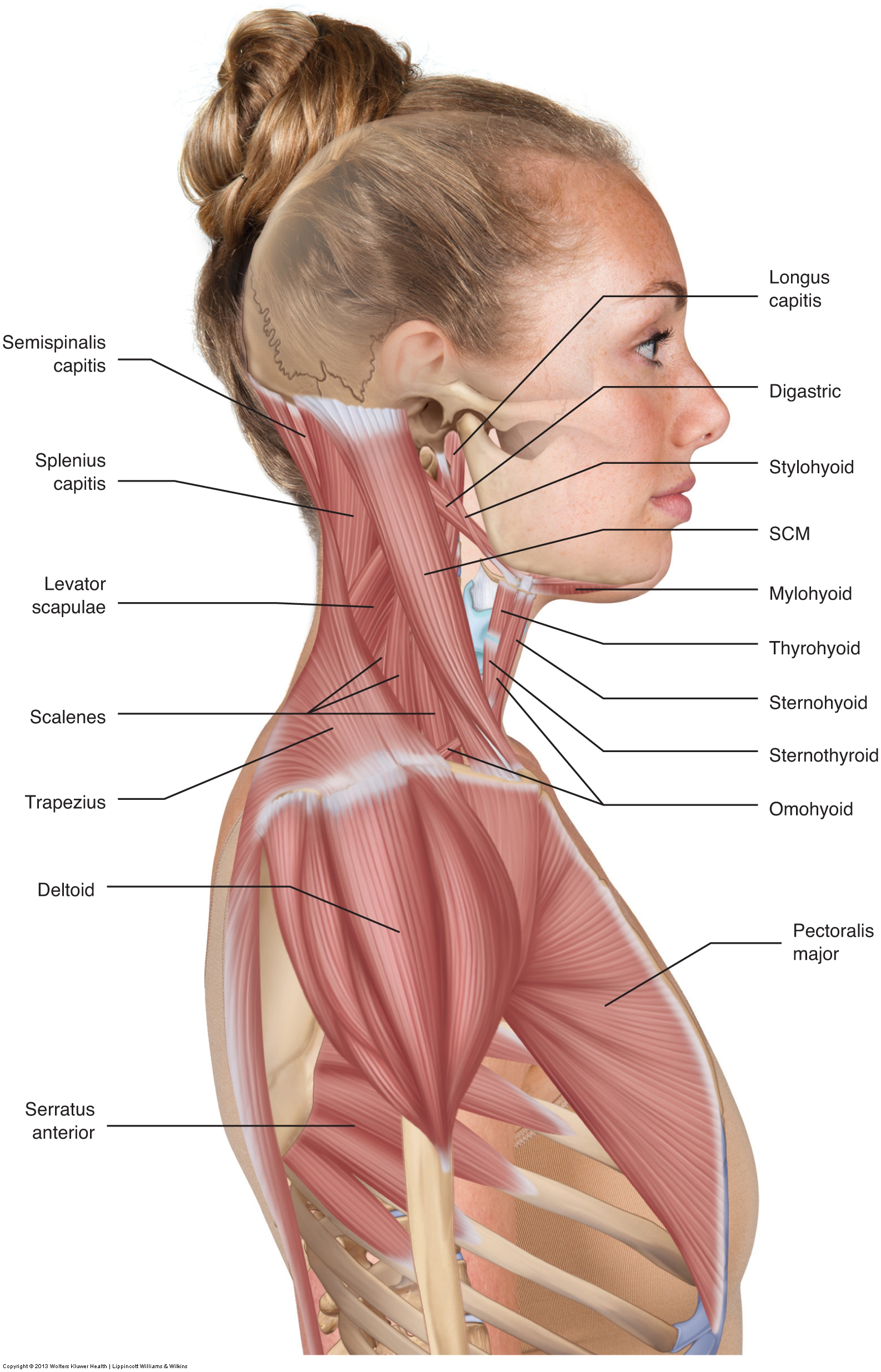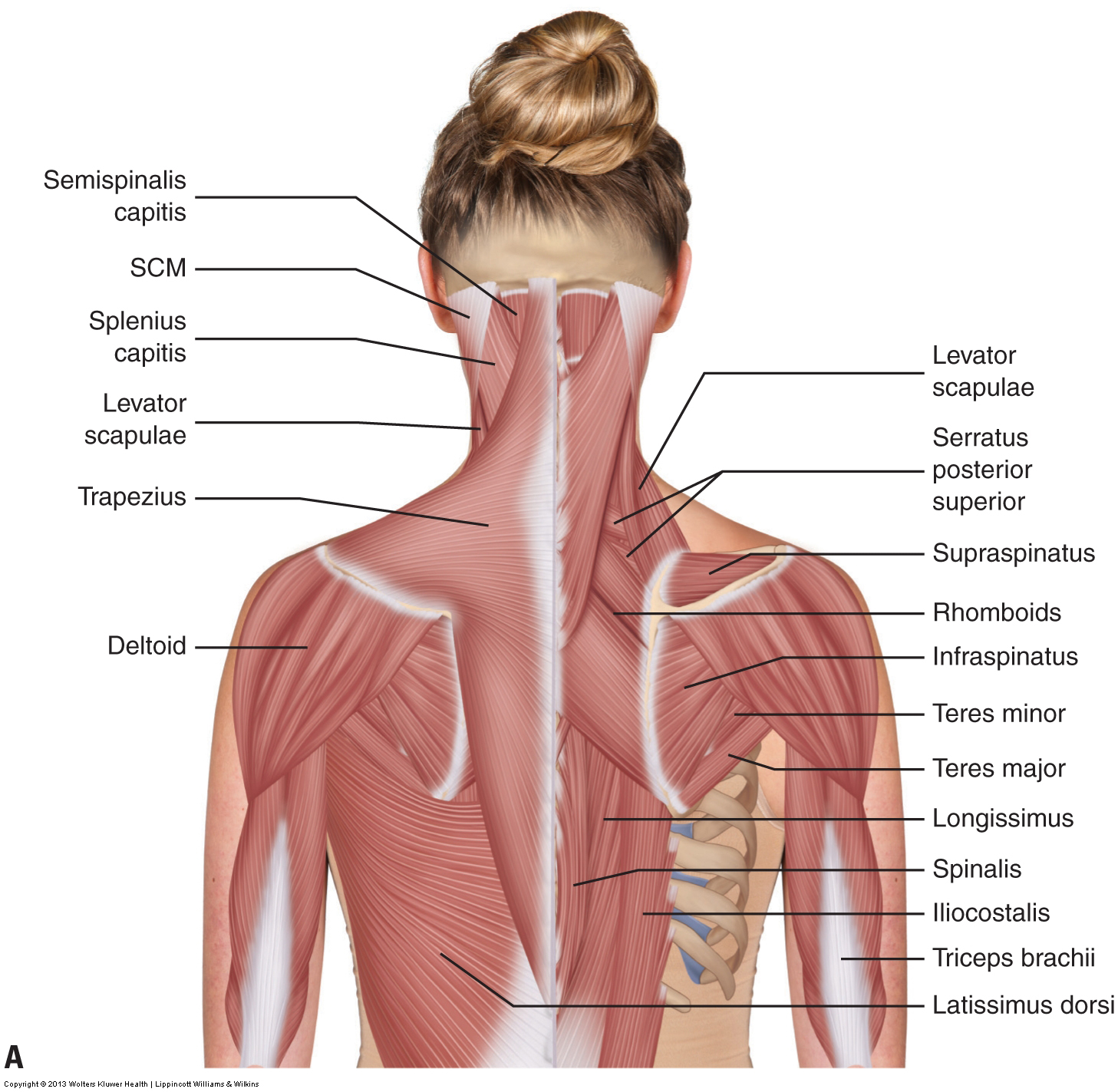To perform clinical neck treatment that is accurate and specific, the therapist needs to know the attachments and actions of the muscles of the neck. For example, to know where to place the palpating hand when applying deep tissue work into the neck, the manual therapist must know the attachments of the target muscle to be worked to be able to locate the target muscle accurately.

Furthermore, the therapist needs to know the target muscle’s mover actions. Knowing the mover actions of the muscles of the neck allows the therapist to ask the client to contract and engage the target muscle so that it palpably hardens. This hardening helps to distinguish the target muscle from the adjacent soft tissues, thereby alerting the therapist to its exact position and depth. Knowing a target muscle’s mover actions is also important when stretching a client’s neck, regardless of the stretching technique that is employed. Stretching a muscle is accomplished by lengthening it, which involves doing the opposite of the muscle’s mover actions. For example, if the target muscle is a neck flexor, it is stretched by extending the client’s neck; if the target muscle is a right lateral flexor, it is stretched by left laterally stretching the client’s neck, and so on.
The muscles of the neck can be divided into posterior and anterior groups:
Although this division is not perfect (e.g., the sternocleidomastoid is anterior at its inferior attachments but posterior at its superior attachments), it is a good beginning framework. It is also helpful to view the muscles as being located either on the right side or the left side of the neck.
Therefore, for this article’s purposes, the neck muscles may be divided into four major structural groups, each in its own quadrant:
- Posterior right side
- Posterior left side
- Anterior right side
- Anterior left side
 Structural and Functional Groups:
Structural and Functional Groups:
Viewing the muscles as part of these larger structural groups also enhances the therapist’s understanding of the functional groups of muscle movers. This is so because structural groups largely determine functional groups—that is, the structural location of a muscle largely determines its mover function. There are six major functional groups of muscles in the neck: flexors and extensors in the sagittal plane, right lateral flexors and left lateral flexors in the frontal plane, and right rotators and left rotators in the transverse plane.
Knowing the structural location of a muscle helps make it possible to understand its action and place it into its functional group without having to memorize this information. For example, all muscles that cross the spinal joints anteriorly are flexors of the neck at the spinal joints. Similarly, all muscles that cross the spinal joints posteriorly are extensors of the neck at the spinal joints. Whether anterior or posterior, if the muscle is located to the right side of the neck, it can right laterally flex the neck at the spinal joints. Similarly, muscles on the left side are left lateral flexors of the neck.
It is also important to know the rotation action of the target muscle when treating it. The rotation component of a muscle’s actions is more challenging to visualize immediately because it is less dependent on the muscle’s structural location, as noted in the previous paragraph. As with all muscles, the direction of the muscle’s line of pull determines the muscle’s action, and the direction of the muscle’s fibers essentially determines the line of pull. Muscles of the neck that perform flexion, extension, right lateral flexion, and/or left lateral flexion must have a vertical component to their fiber direction. Muscles of the neck that perform right or left rotation must have a horizontal component to their fiber direction; in fact, it can be helpful to view them as partially “wrapping” horizontally around the neck. Thus, considering the fiber direction of a neck muscle is important when determining its rotational ability.

Six Major Functional Groups:
These six major functional groups are not mutually exclusive. A muscle can be a member of more than one functional group. For example, the upper trapezius can extend, laterally flex, and contralaterally rotate the neck at the spinal joints. Knowledge of the functional group actions of musculature is critically important when learning to perform multiplane stretching, which is presented in later blog posts.
So, for all students and therapists, a good guideline to follow is: Before memorizing the detailed actions of each neck muscle, it is helpful first to visualize each muscle within its larger structural and functional groups. 🙂
(All figure credits: Courtesy of Joseph E. Muscolino. Originally published in Advanced Treatment Techniques for the Manual Therapist: Neck. 2013.)
Note: This blog post article is the fourth in a series of six posts on the
Anatomy / Structure of the Cervical Spine for Manual Therapists.
The Six Blog Posts in this Series are:
- Introduction to the Cervical Spine
- Cervical Spinal Joints
- Motions of the Cervical Spine
- Musculature of the Cervical Spine
- Ligaments of the Cervical Spine
- Precautions When Working the Neck


